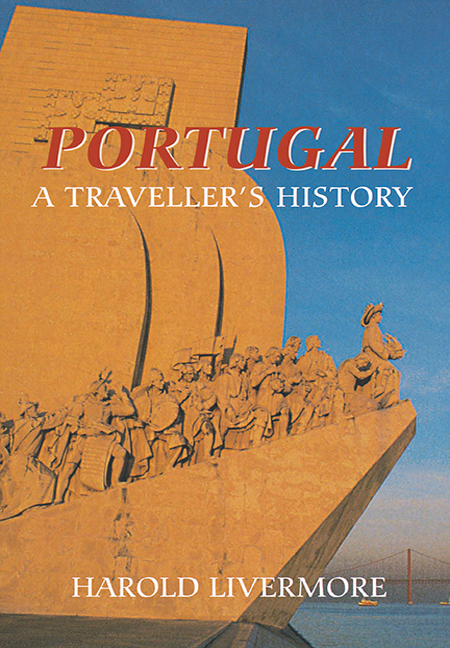Book contents
- Frontmatter
- Contents
- List of Illustrations
- Foreword
- 1 Introduction
- 2 Portugal in History
- 3 Before Portugal
- 4 Islamic Portugal
- 5 Architecture
- 6 Painting
- 7 Music
- 8 Birds
- 9 Fishing
- 10 Portuguese Wines
- 11 Lisbon
- 12 North from Lisbon
- 13 Oporto
- 14 North of Oporto
- 15 Interior Portugal
- 16 Alentejo
- 17 Algarve
- Afterword
- Index
- Frontmatter
- Contents
- List of Illustrations
- Foreword
- 1 Introduction
- 2 Portugal in History
- 3 Before Portugal
- 4 Islamic Portugal
- 5 Architecture
- 6 Painting
- 7 Music
- 8 Birds
- 9 Fishing
- 10 Portuguese Wines
- 11 Lisbon
- 12 North from Lisbon
- 13 Oporto
- 14 North of Oporto
- 15 Interior Portugal
- 16 Alentejo
- 17 Algarve
- Afterword
- Index
Summary
Beyond the Foz, the Atlantic coast has a string of sandy beaches. Next to Leixões, the ocean port for Oporto, comes the fishing-town of Matosinhos, which has a baroque church and a Franciscan convent. The small river Leça gives its name to Leça da Palmeira and a few miles inland Leça do Balio. The coast continues to Vila do Conde, passing a prominent obelisk rising above the sands to commemorate the place at Mindelo where Dom Pedro and his liberal army landed in 1832 from the Azores to take Oporto where they were besieged. The dunes and pools are now a bird-sanctuary at which avian visitors are ringed. Leça do Balio was the former headquarters of the Knights of St John, the Hospitallers, who moved south to Crato in 1312. It may have been a church with a defensive tower against the Vikings. The present building dates from c. 1350 to 1374, the work of the balio Frei Vasques Pimentel. It consists of three naves in regular rectangular plan with a lower triple chancel with stone vaulting. Both church and tower are battlemented. It governed many places in the fourteenth century, and King Fernando's irregular marriage to Leonor Teles was celebrated here in 1372.
The whole area north of Oporto was the Terra dos Maias, the powerful family which liked to trace its origins to King Ramiro II in 917. It covered some sixteen parishes from the sea to the present airport of Pedras Rubras and beyond. It now has no centre, the Alto da Maia being overspread by later development. The church of Aguas Santas dates from the twelfth century, and passed to the Knights of St John and then to Malta. Its baroque trappings have been removed and its original appearance restored. The old roads to Braga by way of Famalicão, and Guimarães by Santo Tirso, have been interwoven with the excellent new system of toll-ways which whisks vehicles through the pine-clad rolling hillsides, avoiding long stretches of ribbon development, but, as everywhere, making errors difficult to rectify and remote places hard to find. Residents who have taken computerisation in their stride slip through the toll-ways and a gadget on the windscreen identifies them so that invisible wizardry sends them a monthly bill for their accumulated mileages.
- Type
- Chapter
- Information
- Portugal: A Traveller's History , pp. 133 - 143Publisher: Boydell & BrewerPrint publication year: 2004



